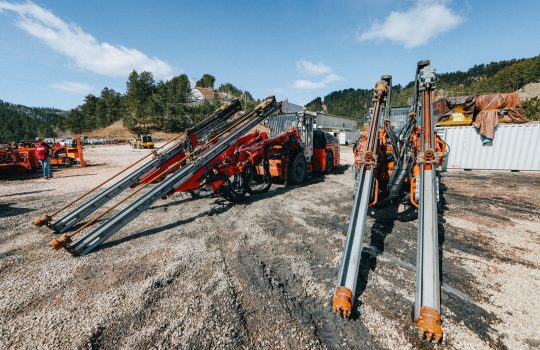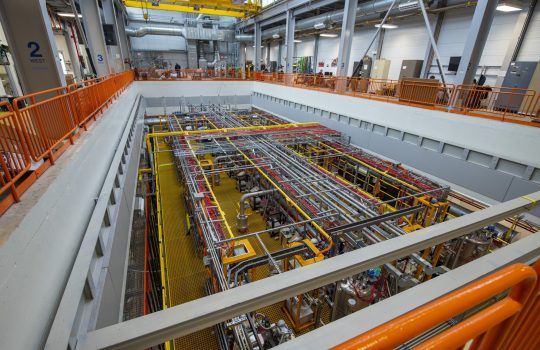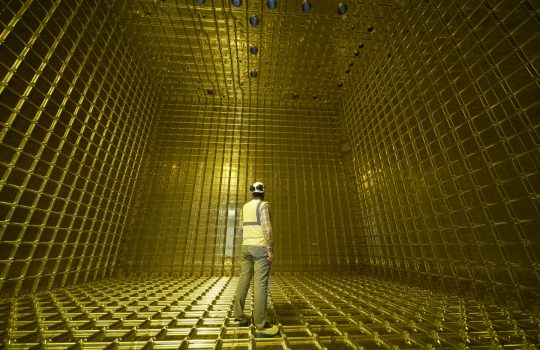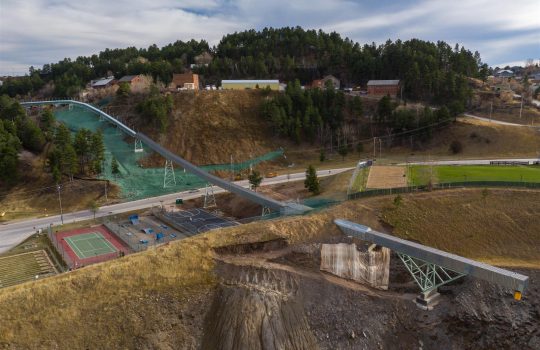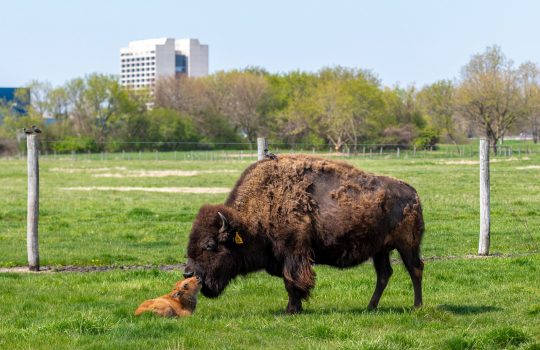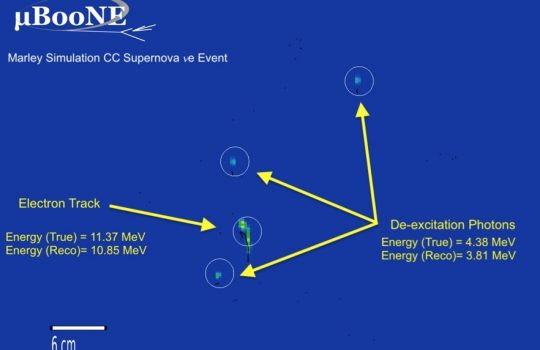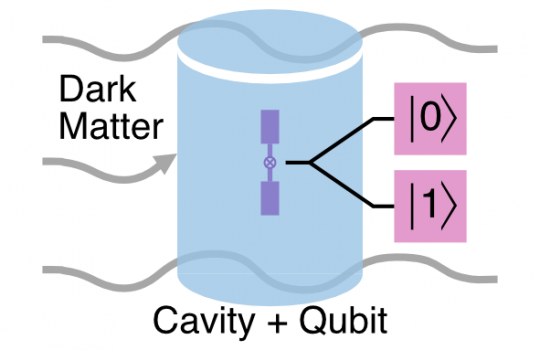Construction crews start lowering equipment a mile underground for excavation for DUNE
- construction
- Deep Underground Neutrino Experiment
- LBNF/DUNE
- Long-Baseline Neutrino Facility
- Sanford Underground Research Facility
- SURF
How do you build a ship in a bottle? Everything necessary to construct the enormous Fermilab-hosted international Deep Underground Neutrino Experiment must fit down a narrow, mile-deep shaft cut through solid rock. Contractors have started the months-long process of disassembling excavation equipment and lowering it underground.

